This is one in a series of posts on the Fujifilm GFX 100. You should be able to find all the posts about that camera in the Category List on the right sidebar, below the Articles widget. There’s a drop-down menu there that you can use to get to all the posts in this series; just look for “GFX 100”. Since it’s more about the lenses than the camera, I’m also tagging it with the other Fuji GFX tags.
There has been an assertion that the Fujifilm 120 mm f/4 GF lens is unsharp off-axis at 1:1. I set out to test that assertion. The 120/4 needs a 45 mm extension tube to get to 1:1 magnification. I couldn’t find mine, so I stacked two 18 mm tubes for a total of 36 mm of extension, which should allow me to get close.
Because the low-contrast slanted edge target that I have been using for my GF lens testing is not sharp enough to be used at such high magnifications, I used a backlit razor blade.
Here’s the setup, with the camera set up without the extension tubes:
Here’s the test protocol:
- GFX 100
- Foba camera stand
- C1 head
- 2 each 18mm Fuji extension tubes
- Lens focused to close to as near as it would focus
- ISO 100
- Electronic shutter
- 10-second self timer
- f/4 through f/11 in whole-stop steps
- Exposure time set by camera in A mode
- Focus bracketing, step size 1, 150 exposures
- Initial focus short of target
- Convert RAF to DNG using Adobe DNG Converter
- Extract raw mosaics with dcraw
- Extract slanted edge for each raw plane in a Matlab program the Jack Hogan originally wrote, and that I’ve been modifying for years.
- Analyze the slanted edges and produce MTF curves using MTF Mapper (great program; thanks, Frans)
- Fit curves to the MTF Mapper MTF50 values in Matlab
- Correct for systematic GFX focus bracketing inconsistencies
- Analyze and graph in Matlab
First I’ll look at microcontrast, which for this post I’m defining as MTF at a quarter of the Nyquist frequency.
First, in center of the image.
The red, green and blue bars at the results for each of the three raw plane filter shapes. The gray bars are for the white balanced raw image. You can see that the gray bars are much lower than the others. The reason for that is that the lens has quite a bit of longitudinal chromatic aberration (LoCA) in this configuration. I’ll be showing you images that quantify that in a subsequent post. This is low microcontrast. I did a run with no extension tubes, which gives 1:2 magnification.
The microcontrast is much higher.
I looked at the right edge, using a horizontal slanted edge. Here’s what I saw with the 36 mm tubes:
Wide open and at f/5.6, that’s quite a bit worse than in the center of the image.
Without the tubes:
That is much better, and approaches the results on the lens axis.
My conclusion is that the lens is not that sharp either on or off axis with 36 mm worth of tubes. I’d expect it to be even worse with 45 mm extension. This is not a good lens for process work such as digitizing chromes and negs. I haven’t check for field curvature with the extension, but I don’t have high hopes for a flat field there.
Next up: LoCA.
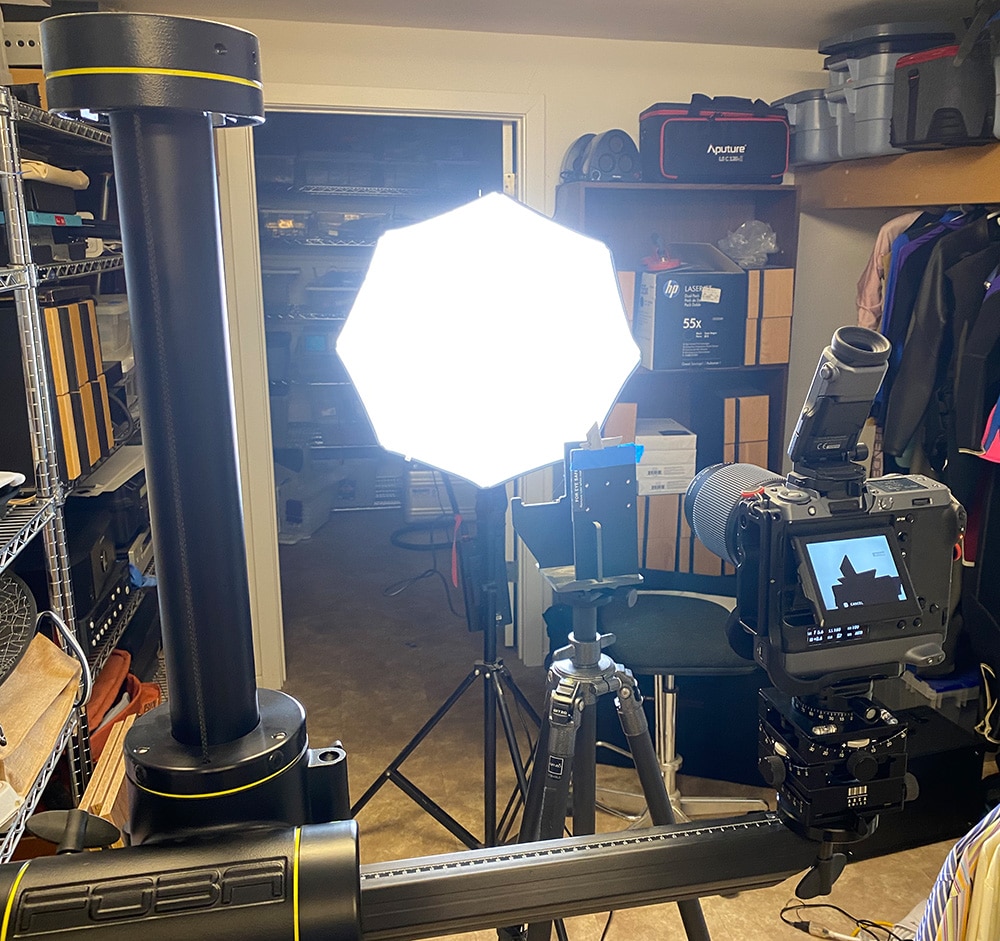
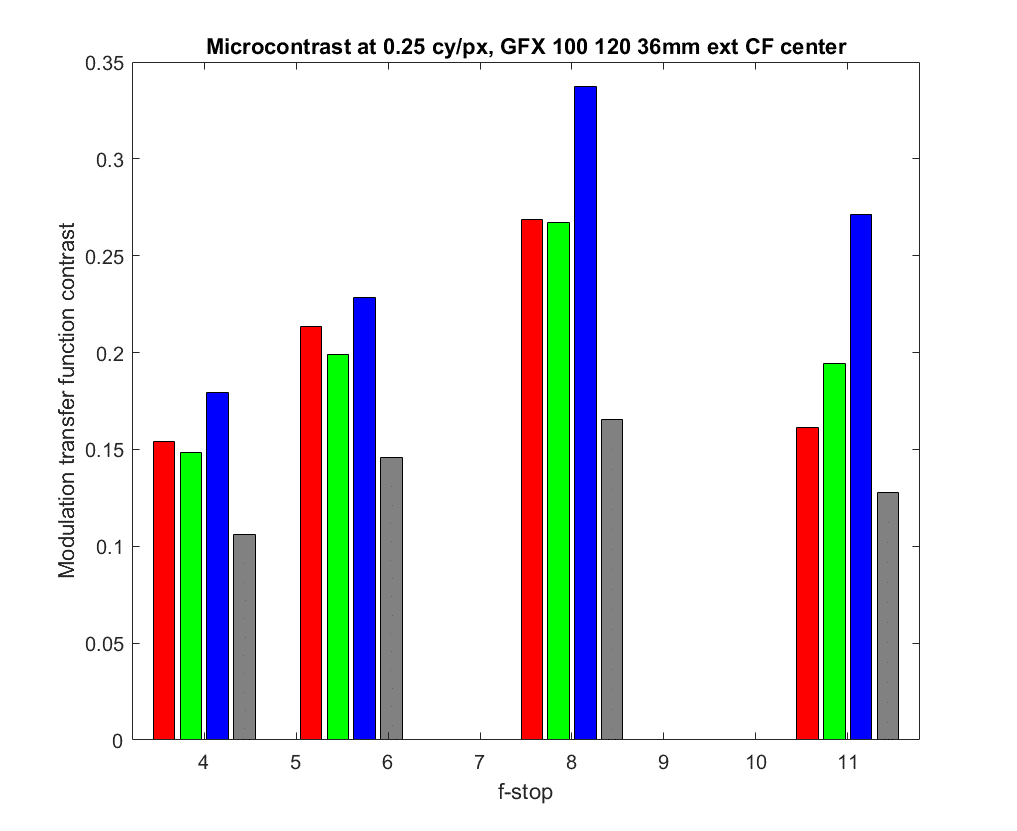
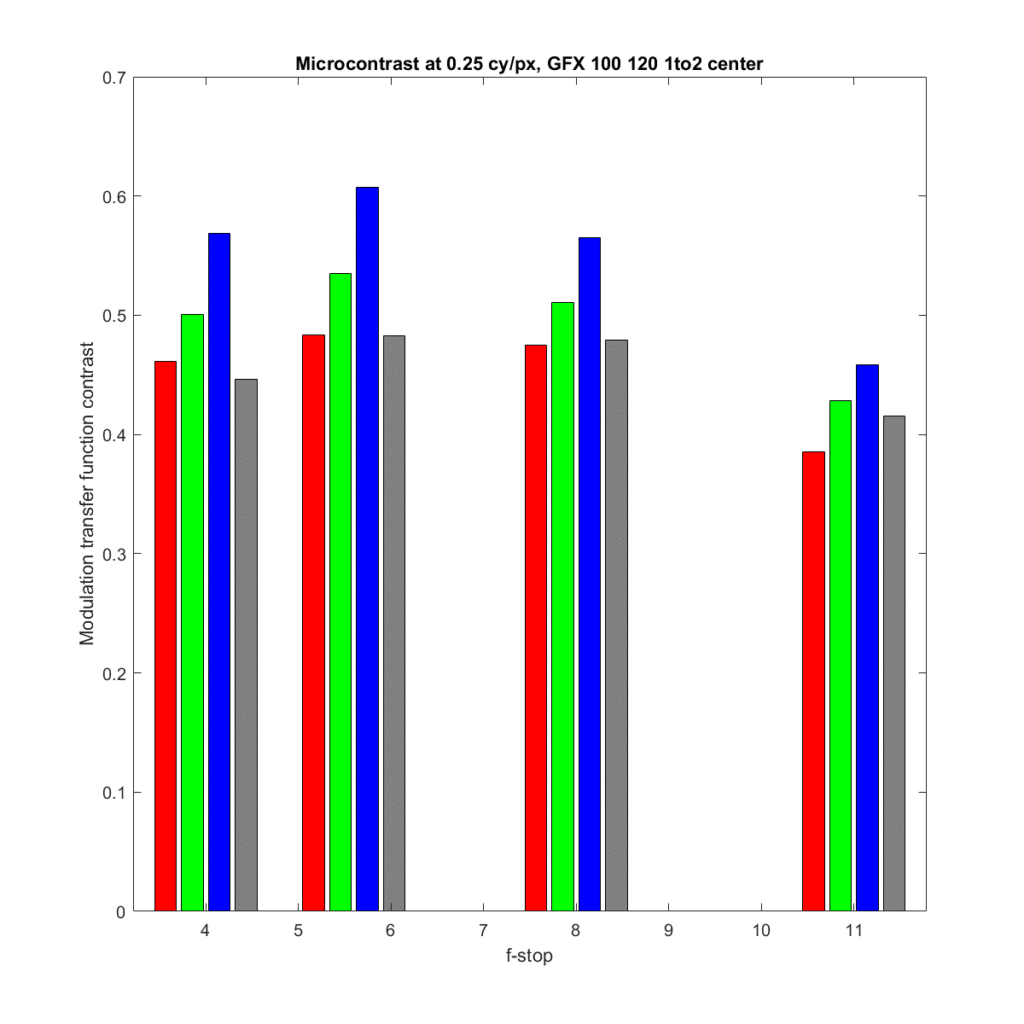
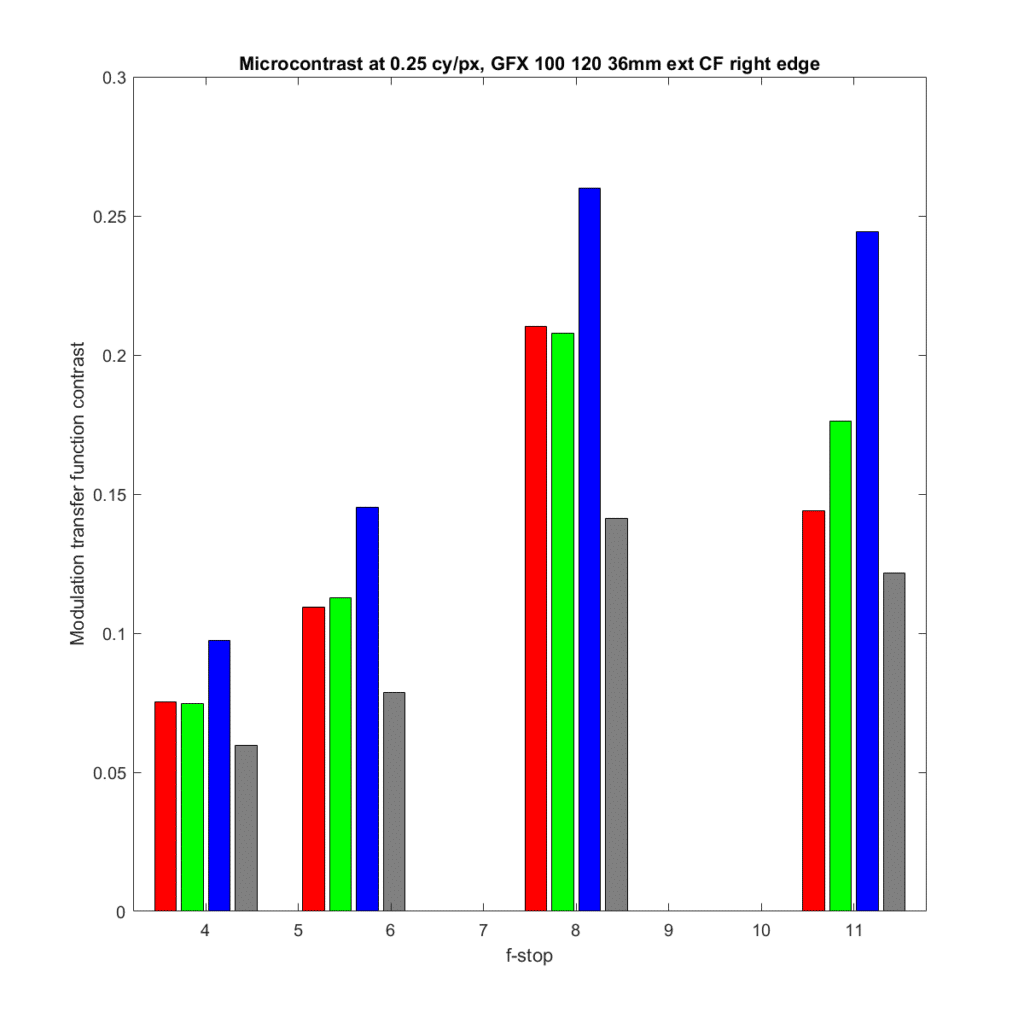
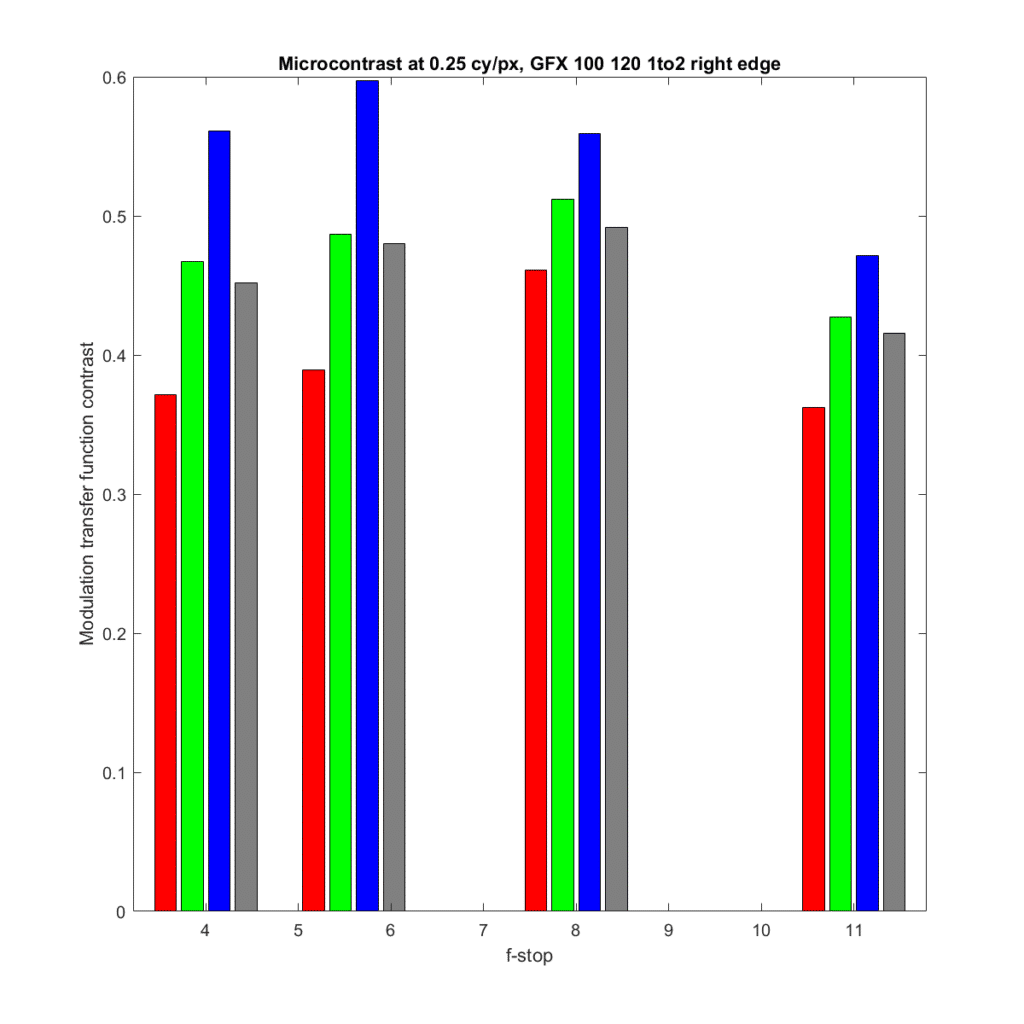
Leave a Reply